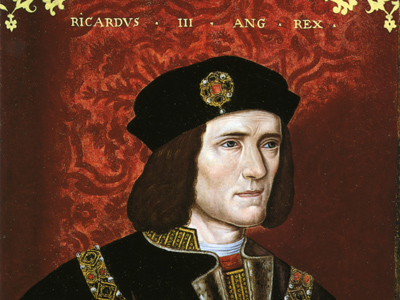
King Richard III by unknown artist, late 16th century.
Looking for Richard
This Looking for Richard quiz concentrates on finding the skeleton.
Following his death at the Battle of Bosworth, Richard III's body was taken to Leicester, where it was buried in the Franciscan Friary of Greyfriars. In 1538, when Henry VIII dissolved Greyfriars, Richard's body was said to have been cast into the River Soar and his coffin used as a trough for animals to drink from, but this story turned out to be false. The site of Greyfriars was sold and, over time, built upon. Until recently it was a car park and the once great king of England lay beneath the wheels of vehicles, rather than the grand tomb more befitting of a past monarch.
Ready for more?
not all...
quizzers. Try to win a coveted spot on our Hall of Fame Page.







